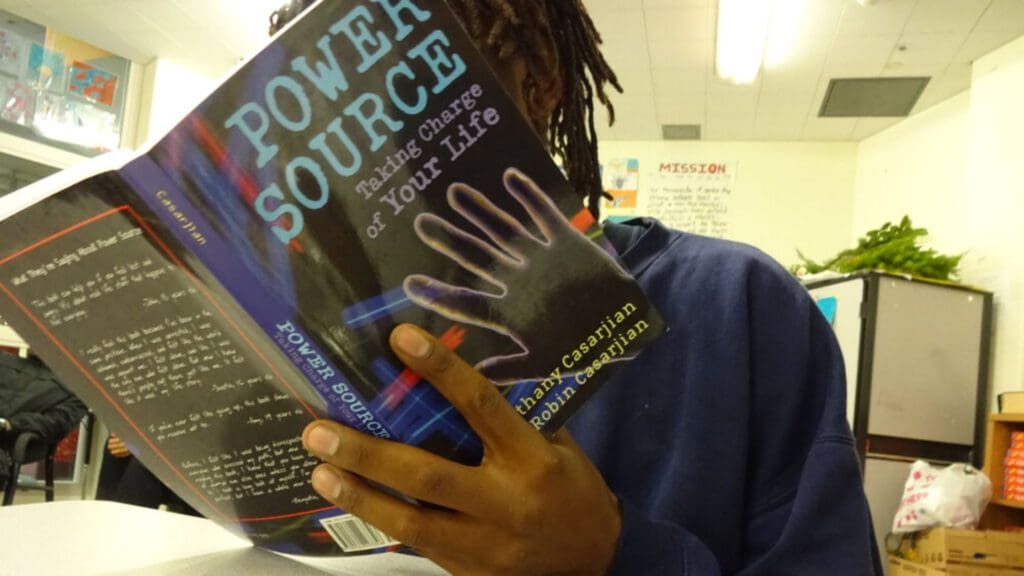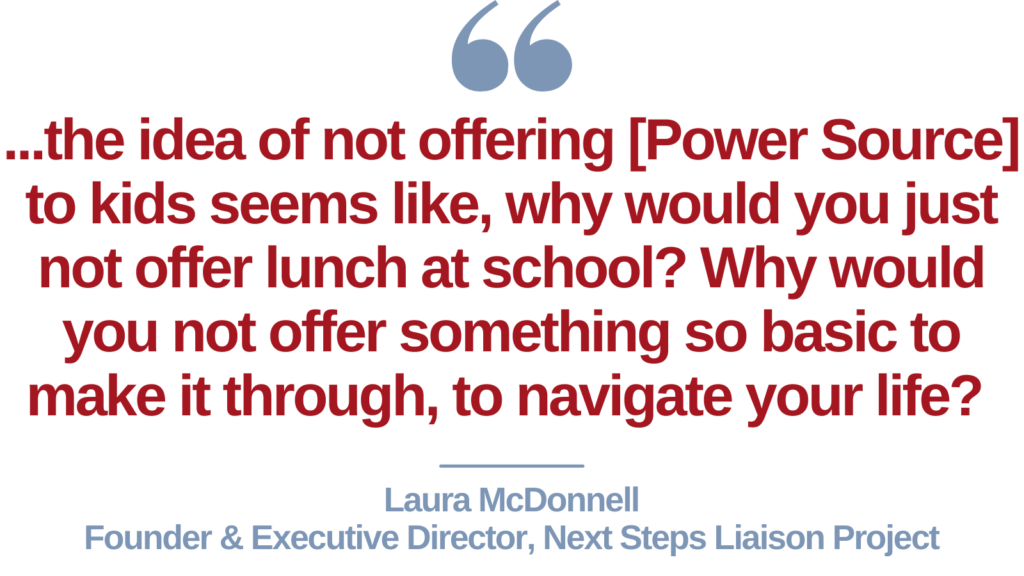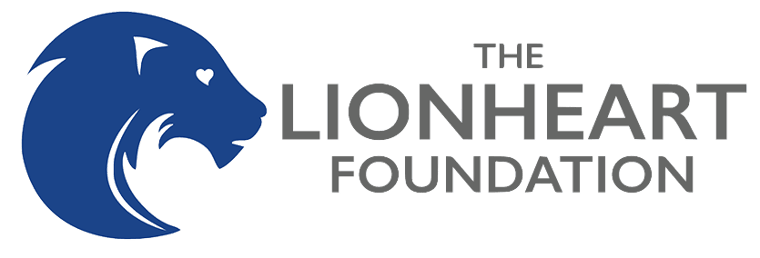The Impact of the Power Source Program
Laura McDonnell is the Founder and Executive Director of Next Steps Liaison Project, a non-profit dedicated to helping detained and court-involved youth get on a positive path after detention by first providing Social Emotional Learning (SEL) while inside Juvenile Hall, and later a bridge to tangible next steps upon release. She’s been using Power Source as her main SEL curriculum.
Watch this video, or read the transcript below, to learn about Laura’s decision to use Power Source!
Q: What is Next Steps Liaison Project and what is your role in the organization?
I am the Founder and Executive Director of Next Steps Liaison Project. What we do is provide classes and ways to come together and connect with youth inside juvenile detention centers, and then we offer to extend that connection into post custody through a partnership with the probation department. We try to be a bridge to resources on the outside. That’s kind of in a nutshell what we do, but we really see the hook – of getting kids interested in connecting – the hook is really the classes and primarily the Power Source classes. We also run garden classes inside the Marin Juvenile Hall and that is an equally powerful hook, but I’d say that part of that reason is because all the concepts that are embedded in Power Source overlap and interplay with what we do in the garden, so we embed social emotional learning into the garden program.
Q: How have youth responded to Power Source?
I can’t tell you how many times kids have just said, “this is the only program that we really come to consistently,” or, “this is the best program.” I think that Power Source speaks to everybody. One of the first things I say to kids is like, we’re not bringing this emotional literacy because you all need to fix yourselves because you’re in juvie and you need to get better. We bring this work because we don’t know how you feel but we know that you do feel – because that’s what makes you human. And so, we all need emotional literacy, we all need to understand how the things that we feel and the stories we tell ourselves, and our thought processes, and how they impact our behavior – how they impact our choices, our decision making. I constantly share with the kids that, like, when I re-teach something to you, I’m re-teaching it to myself. When I’m teaching you, take a breath before you make a decision – so that you can make a decision – I’m re-teaching it to myself because I have to do that in my life, too. There may be different consequences in my life when I need to take a breath but it’s the same process, it’s the same concept. So, this is something for everybody.

Q: Why should other institutions and organizations consider implementing Power Source?
Why wouldn’t they?! First of all, adolescence is such a hard time – it can be such a hard time. We need so much mirroring back from adults, from peers, from coaches, from teachers. We need to have that constant dialogue; we need to be heard, we need to have adults brainstorm with us ideas, on the most basic level, even if we’re not talking about kids who are really engaging in high-risk behavior. But if they are, clearly they’re asking for someone to engage, for someone to notice, for someone to hear and help them sort it out and sort it through. And also, so often when kids are making those bad choices, and when it goes wrong and they disappoint their parents, they get locked up, or what have you – they fall; they crash. And that’s so painful, so the idea of not offering this to kids seems like, why would you just not offer lunch at school? Why would you not offer something so basic to make it through, to navigate your life? Particularly, kids who are acting out or engaging in high-risk behavior often have difficult lives at home, obviously, and there needs to be a container for that.

So, the whole reason I started looking for this was when I first walked into the San Francisco Juvenile Hall, I could just feel all this trauma, and one of my first thoughts was like, where’s the container for this? I know that some kids did have therapists that would come in, or a case worker or what have you, but there was no container. I just thought, how is that even possible, these kids are sleeping in a cell at night. It just seemed to be the antithesis of healing and getting to the root cause of, why are you acting out? Why are you stealing? And there are so many layers to that! And very often it is survival driven, and we need to look at, why are some communities still so sorely underserved? So many people blocked, and so many barriers for so many people, and then those people have children and then there’s survival driven behaviors. I think kids need validation for that. And then so many times kids feel like they do want to change up their lives.
I think the sooner that we can offer that container, along with other resources, along with as many resources as a school can pull out. Every time I hear about a school that has this many police officers, I’m like, how many wellness centers do you have for the kids? Do you have at least one for every grade? If we have more containers for all kids that are trying to navigate, I think that’s where prevention can really and truly happen.
I work with kids in maximum security at San Francisco (basically the older kids) but in general those kids have been coming in and out of there since they were twelve. So they’ve grown up in and out of that system. And I think that once a kid gets to that point, their chances of getting out of that life – it’s not in their favor.
I think if we can catch kids sooner and create containers, and support systems, and work with families, I think it’s just all part of treating kids the way they deserve to be treated. No kid is like, yeah I want to be a criminal and get locked up by the time I’m eighteen. And if they do get to that point, which sometimes they do, then there’s been a real failure in all of the adults in all the systems around them if that’s where they’re at. I’ve seen that happen where you get to that point where you’re like, yeah, I’m going to end up there. So to me it’s just part of a multi-layered system where we start to provide for kids what they need, instead of ignoring their needs and punishing them – which so obviously doesn’t help.
To learn more about Power Source, click here.
